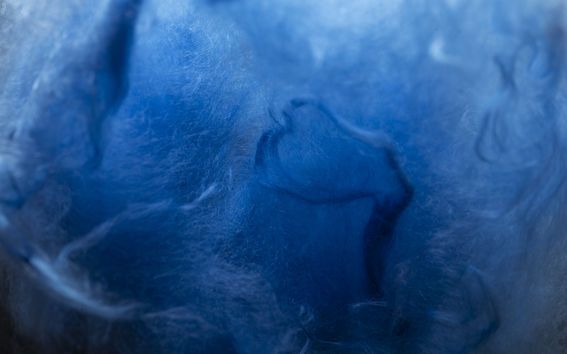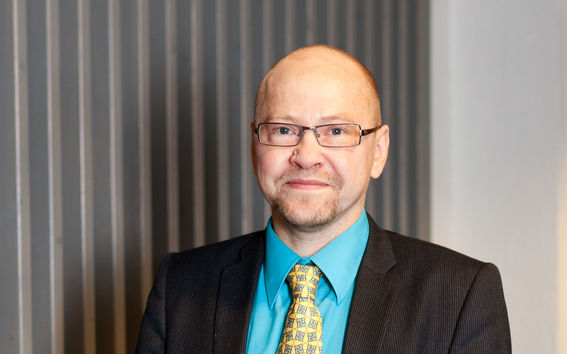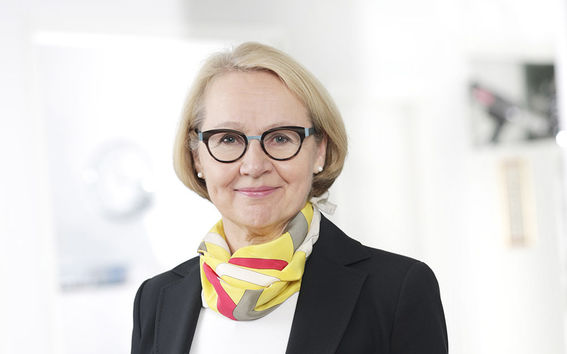Bioproducts will revolutionise forestry in Finland

In near future, microcrystalline cellulose may replace some of the fat in cheese, provide additional fibre in the morning porridge, fortify animal feed or even prevent diseases in production animals. It may also replace plastic in packaging materials and oil-based synthetic fibres in textiles. A new production method developed at Aalto University under the leadership of Professor Olli Dahl opens up entirely new markets for microcrystalline cellulose (MCC). With the help of AaltoCell™ technology, it will be possible to manufacture microcrystalline cellulose much more economically and ecologically.
‘We have huge opportunities in our hands. Cellulose is a renewable and biodegradable material that can be used to replace materials such as plastic in the future’, says Janne Laine, Vice President responsible for innovations at Aalto University. Microcrystalline cellulose can turn Finland’s pulp mills into bioproduct plants that will take our forest sector to a whole new level. ‘Instead of exporting cellulose, Finland could export refined products that have a high added value. Wood biomass provides opportunities for the development of a wide range of products. In Finland, we have the advantage of knowing the material well’, says Kristiina Kruus, Dean of the Aalto University School of Chemical Engineering.

AaltoCell™ will revolutionise the market
Currently, small amounts of microcrystalline cellulose are manufactured worldwide mainly for medical applications but the patented AaltoCell™ technology could revolutionise everything. Even just one factory using the technology may double the current MCC production in the world.
‘The greatness of the AaltoCell™ technology is that it can produce microcrystalline cellulose with high capacity in existing pulp mills. The manufacturing process can be fine-tuned according to the added value of the required product. It is also possible to scale the relationship between pulp production and MCC production in the factory’, Laine points out.
However, the market will soon be saturated if new uses are not sought for MCC, and they are numerous. One potential large-volume market is the animal feed industry. For cows, MCC is a power food that increases the energy content of the animal feed, while for poultry, it is a fibre supplement that improves growth and welfare. MCC has also been granted a food classification: for example, it can be used to keep the texture of yogurt even or as a fibre supplement in sweet buns. While the less processed brown MCC is suitable for animal feed, the highly refined white microcrystalline cellulose is required for products such as pharmaceuticals.
Aalto University is taking the AaltoCell™ technology to the global markets in cooperation with Andritz Oy, a manufacturer of equipment for the paper and pulp industry. The first production plants are expected to be in operation within a few years. Alongside the commercialisation of the technology, Aalto and Andritz are developing new applications for microcrystalline cellulose.
Aiming at products with high added value
Cellulose is a renewable natural resource that the Finnish forests have in abundance. There is also a tremendous global demand for biobased, sustainable development solutions. ‘The Finnish forest industry will undergo a radical change in the future. I am convinced that within twenty years, all companies in the forest sector will have operations related to textiles. Everyone understands that the price of textiles is at least double the price of pulp’, Laine adds.
With new products, the value of the Finnish forest sector can be significantly increased from what it is today. At the same time, significant opportunities for new business will open up. ‘In the future, there will be a need for companies that manufacture packaging materials, fabrics or raw material for chocolate from microcrystalline cellulose fibres. Having the entire value chain of different products in Finland would open up huge opportunities for the country’s economy’, says Laine. ‘This really is a golden age for us. Let’s keep the business in our own hands’.
Aalto cooperates closely with industries in the field of new biomass-based innovations and there are also high expectations for biodegradable nanocellulose. When cellulose is split into nanoscale fibres, the material obtained is extremely strong and light.

Together with VTT Technical Research Centre of Finland, Aalto has created a new material by combining nanocellulose and the silk protein found in spider web threads. The resulting material is durable, stiff and tough. Aalto has also been involved in developing a plant-based non-toxic glue that is extremely strong.
Imagination is the only limit when new applications are sought for nanocellulose, such as using it in cleaning mining waters, as a filler in paints or as a replacement for plastic in paper coatings. ‘Aalto is a world leader in the development of nanocellulose applications, and we are ranked among the first three in the number of scientific publications in the field’, says Kruus.
Towards a textile revolution
Currently, 100 million tonnes of textiles are produced in the world every year and by 2050, the need will rise to 250 million tonnes. It will not be possible to meet this need with oil-based synthetic fibres or cotton, which require a lot of cultivated area and water. If we continue as before, the world will also be drowning in mountains of textiles as only one per cent of textiles are recycled. Biobased materials are the key to the sustainable use and more efficient recycling of textiles. ‘The clothing industry giants are feverishly looking for alternatives to the current oil-based synthetic fibres, and as one example, IKEA’s goal is to make all of its products biobased by 2030’, Laine explains.
Aalto has already set an example to the rest of the world in the development of sustainable textile production. The Ioncell® method developed at Aalto can be used to spin cellulose and recycled materials such as textile waste into high-quality textile fibres. An ionic solvent developed at the University of Helsinki is used in the manufacturing process. The story of Ioncell® includes members of the Aalto community ranging from chemists to textile sector specialists, and their work has led to unique creations, such as the gown worn by Mrs Jenni Haukio at the Independence Day reception and the Allu dress designed for Marimekko. ‘We do pioneering work in the development of biomaterials and we are changing the world with innovations like AaltoCell™ and Ioncell®’, says Kruus.
Text: Marjukka Puolakka
We are seeking donations to enable the development of bio-based materials and the continuation of education and research in the field.
Interested in donating? Contact

Check out Aalto University materials research and commercialization of the results
- Published:
- Updated: